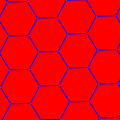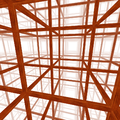| Sides | Basic polygon (monoform) | Monohedral
tessellation | Polyform | Applications |
|---|
| 1 |  | line segment (square) | - | Polysticks: monostick, distick, tristick, tetrastick, pentastick, hexastick | Segment Displays |
|---|
| line segment (triangular) | Polytrigs |
| line segment (hexagonal) | Polytwigs: monotwig, ditwig, tritwig, tetratwig, pentatwig, hexatwig |
| 3 |  | 30°-60°-90° triangle | 
Kisrhombille | Polydrafters: monodrafter, didrafter, tridrafter, tetradrafter, pentadrafter, hexadrafter | Eternity puzzle |
|---|
 | right isosceles (45°-45°-90°) triangle | 
Kisquadrille | Polyaboloes: monabolo, diabolo, triabolo, tetrabolo, pentabolo, hexabolo, heptabolo, octabolo, enneabolo, decabolo | Tangram |
|---|
| 30°-30°-120° isosceles triangle | 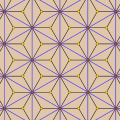
Kisdeltille | Polypons: tripon, tetrapon |
|---|
| golden triangle | | Polyores | |
|---|
| 4 |  | square (connected at edges or corners) | 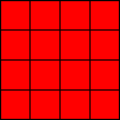
Quadrille | Polykings: pentaking, hexaking, heptaking | |
|---|
| square (connected at edges, shifted by half) | Polyhops: dihop, trihop, tetrahop | |
| square (connected at edges in 3D space) | Polyominoids: monominoid | |
| square (representing path of a chess knight) | Polyknights: tetraknight, pentaknight, hexaknight | Knight in chess |
| rectangle | 
Stacked bond | Polyrects: tetrarect, pentarect, hexarect, heptarect | Brickwork |
|---|
| trapezoid | | Polytraps: tritrap | |
|---|
 | rhombus | 
Rhombille | Polyrhombs | |
|---|
| 60°-90°-90°-120° kite | 
Tetrille | Polykites: trikite, tetrakite, pentakite, hexakite, heptakite | |
|---|
| half-squares | | Polyares: triare, tetrare, pentare, hexare | |
|---|
| half-hexagons | | Polyhes: monohe, dihe, trihe, tetrahe | |
|---|
| 5 |  | regular pentagon | - | Polypents: monopent, dipent, tripent, tetrapent, pentapent, hexapent, heptapent | |
|---|
 | Cairo pentagon | 
4-fold pentille | Polycairoes | |
|---|
| flaptile [2] | 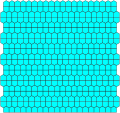
Iso(4-)pentille | Polyflaptiles: diflaptile, triflaptile, tetraflaptile | |
|---|
| 120°-120°-120°-120°-60° pentagon | 
6-fold pentille | Polyflorets | |
|---|
| 6 | | Rombik [3] | | Polyrombiks [4] | |
|---|
| 8 |  | regular octagon (with squares) | | Polyocts: dioct | |
|---|
| - | | quarter of circular arc | | Polybends | |
|---|
 | circle (with concave circles as bridges) | | Polyrounds | |
|---|
| quarter of circle, and quarter-circle sector removed from a square | | Polyarcs: monarc, diarc, triarc | |
|---|



